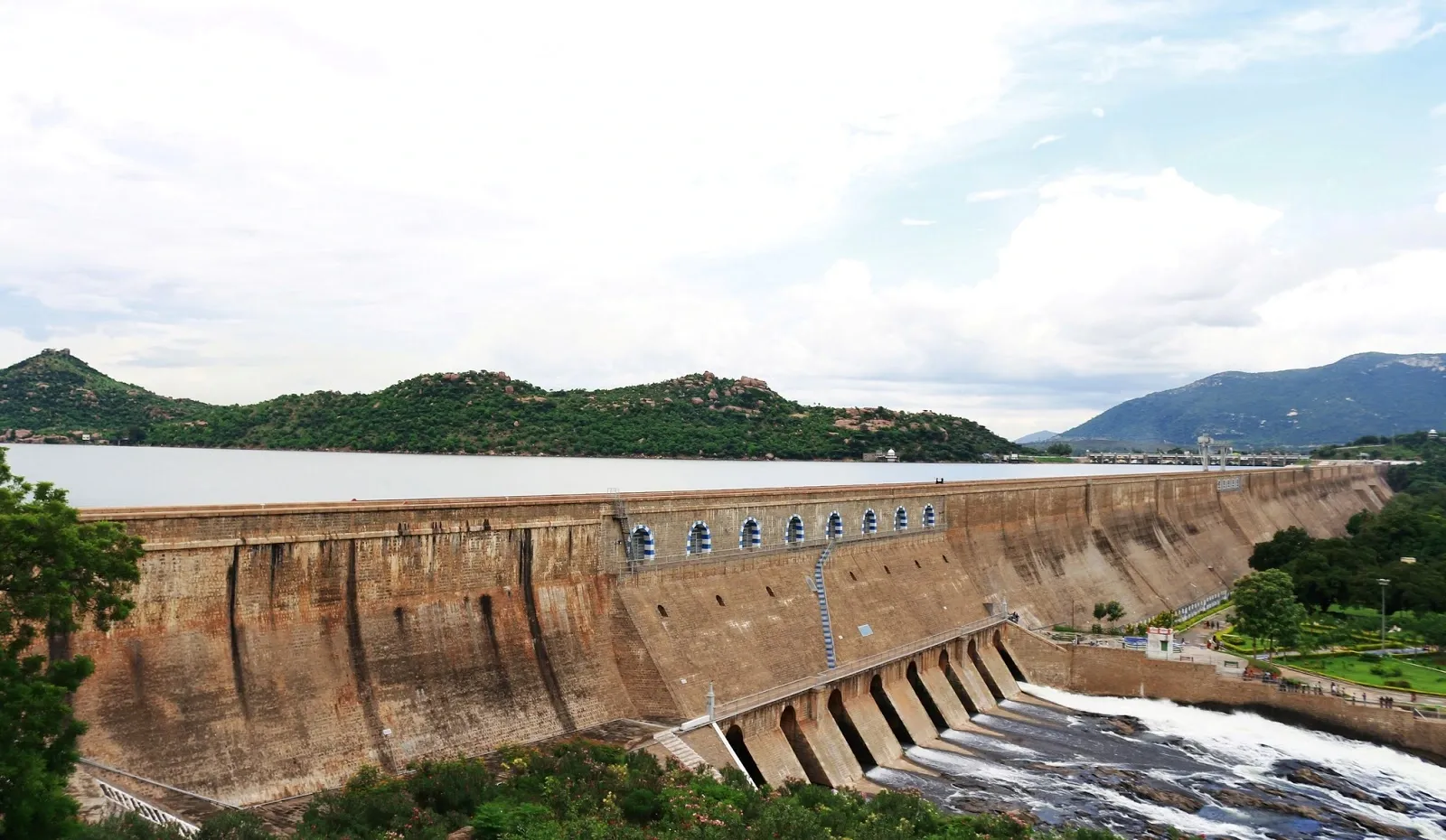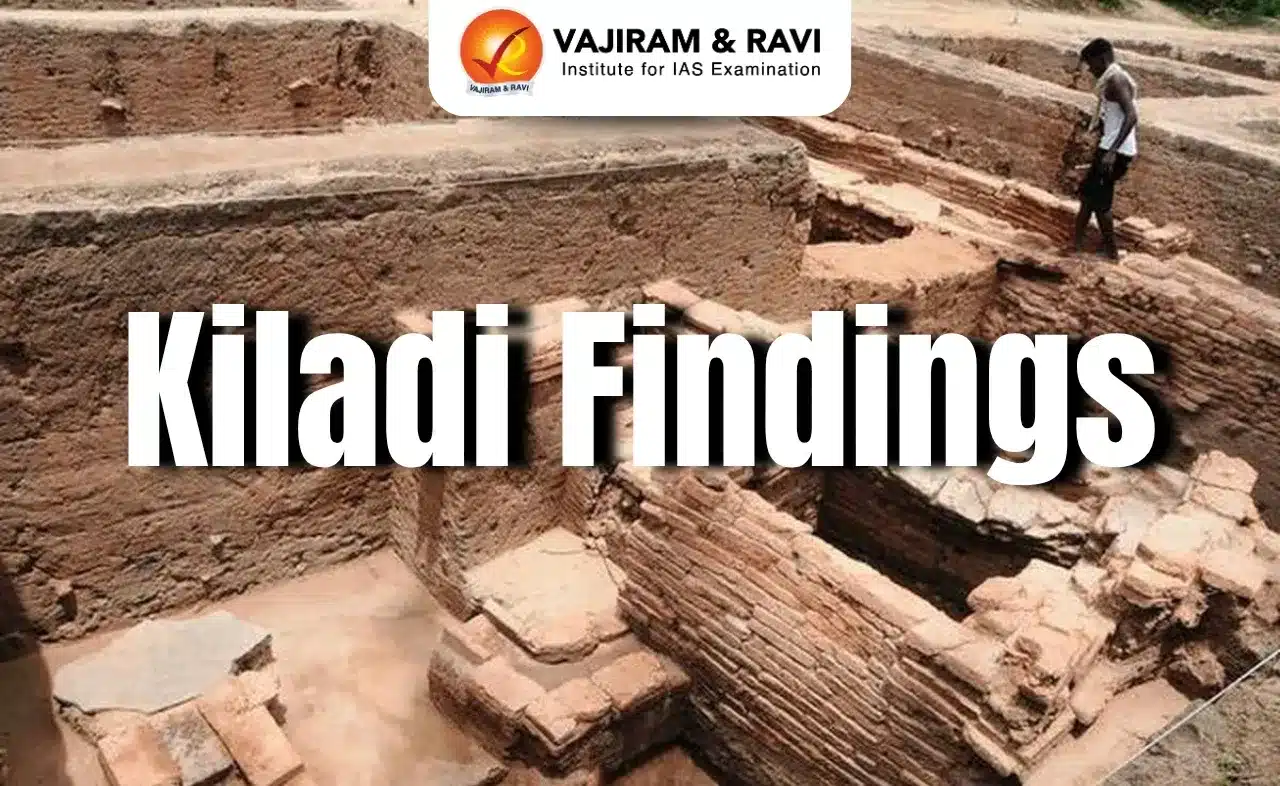About Mettur Dam:
- It is one of the largest dams in India, built in 1934.
- Location: It is located at Mettur, District Salem in Tamil Nadu.
- It is constructed in a gorge, where the Kaveri River enters the plains.
- Features:
- It is a masonry gravity dam.
- The length of the dam is 1700 m with a maximum level of 120 feet and a capacity of 93.4 tmc ft.
- The dam creates Stanley Reservoir.
- Set at the foot of the dam in 1937 is the Mettur hydroelectric and thermal power plant, with a hydropower generation of 32 MW.
- There is a park adjoining the Dam on the opposite side with lawns and fountains, and also has the Muniappan/Aiyanar statue in the vicinity.
- It provides irrigation facilities to parts of Salem, the length of Erode, Namakkal, Karur, Tiruchirappali, and Thanjavur districts for 271,000 acres (110,000 ha) of farmland.
Key Facts about Kaveri River:
- Kaveri River, also known as Cauvery River, is one of the major rivers of southern India, which is considered sacrosanct by the Hindus.
- Course:
- It rises on Brahmagiri Hill of the Western Ghatsin southwestern Karnataka, at an elevation of 1.341m (4,400 ft.) above mean sea level.
- It flows in the south and east through Karnataka and Tamil Nadu and then across the southeastern lowlands, and finally surrenders in the Bay of Bengal through two principal mouths.
- The total length of the river from origin to outfall is 800 km.
- It is bounded by the Western Ghats on the west, by the Eastern Ghats on the east and south and by the ridges separating it from the Krishna basin and Pennar basin on the north.
- The Cauvery basin extends over the states of Tamil Nadu, Karnataka, Kerala, and the Union Territory of Puducherry, draining an area of 81,155 Sq.km
- Tributaries: Its important tributaries joining from left are the Harangi, the Hemavati, the Shimsha, and the Arkavati, whereas the Lakshmantirtha, the Kabbani, the Suvarnavati, the Bhavani, the Noyil, and the Amaravati joins from right.
- Dams: Dams constructed across the river are Krishna Raja Sagara Dam, and Mettur Dam, and the Banasura Sagar Dam on the Kabini River, which is a tributary of the Kaveri River.
Q1: What is a gravity dam?
A gravity dam is a type of dam structure that is primarily designed to resist the force of gravity and hold back water or other materials. It relies on its own weight and mass to counteract the horizontal pressure exerted by the water or other materials it is retaining. Gravity dams are among the oldest and most common types of dams used for various purposes, including water supply, irrigation, flood control, and hydroelectric power generation.
Source: Inflow into Mettur dam increases to 1.18 lakh cusecs; warning issued for low-lying areas
Last updated on June, 2025
→ UPSC Notification 2025 was released on 22nd January 2025.
→ UPSC Prelims Result 2025 will be out soon for the CSE held on 25 May 2025.
→ UPSC Prelims Question Paper 2025 and Unofficial Prelims Answer Key 2025 are available now.
→ UPSC Calendar 2026 is released on 15th May, 2025.
→ The UPSC Vacancy 2025 were released 1129, out of which 979 were for UPSC CSE and remaining 150 are for UPSC IFoS.
→ UPSC Mains 2025 will be conducted on 22nd August 2025.
→ UPSC Prelims 2026 will be conducted on 24th May, 2026 & UPSC Mains 2026 will be conducted on 21st August 2026.
→ The UPSC Selection Process is of 3 stages-Prelims, Mains and Interview.
→ UPSC Result 2024 is released with latest UPSC Marksheet 2024. Check Now!
→ UPSC Toppers List 2024 is released now. Shakti Dubey is UPSC AIR 1 2024 Topper.
→ Also check Best IAS Coaching in Delhi






















